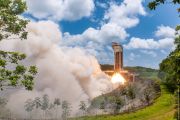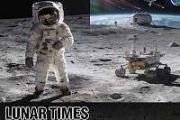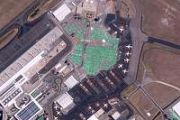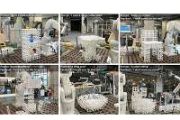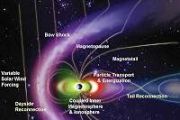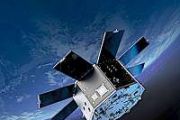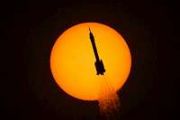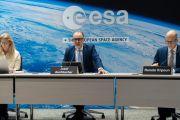
Copernical Team
Akoustis Finalizes Asset Sale to SpaceX Subsidiary Tune Holdings
 Akoustis Technologies, a leading provider of patented bulk acoustic wave (BAW) high-band RF filters, has completed the sale of most of its assets to Tune Holdings Corp., a wholly owned subsidiary of Space Exploration Technologies Corp. (SpaceX). The sale, conducted as a going-concern transaction under Section 363 of the U.S. Bankruptcy Code, was approved by the U.S. Bankruptcy Court for the Dist
Akoustis Technologies, a leading provider of patented bulk acoustic wave (BAW) high-band RF filters, has completed the sale of most of its assets to Tune Holdings Corp., a wholly owned subsidiary of Space Exploration Technologies Corp. (SpaceX). The sale, conducted as a going-concern transaction under Section 363 of the U.S. Bankruptcy Code, was approved by the U.S. Bankruptcy Court for the Dist China's Satellite Navigation Industry Reaches $79.9 Billion in 2024
 China's satellite navigation and positioning service industry achieved a total output value of 575.8 billion yuan ($79.9 billion) in 2024, reflecting a 7.39 percent year-on-year growth, according to a white paper released on Sunday. The report highlights the ongoing expansion and technological advancements within the BeiDou Navigation Satellite System (BDS).
By the end of 2024, the cumulat
China's satellite navigation and positioning service industry achieved a total output value of 575.8 billion yuan ($79.9 billion) in 2024, reflecting a 7.39 percent year-on-year growth, according to a white paper released on Sunday. The report highlights the ongoing expansion and technological advancements within the BeiDou Navigation Satellite System (BDS).
By the end of 2024, the cumulat Indian space agency's rocket fails to deploy satellite for Earth observation
 India failed in its attempt to launch a satellite to observe Earth when the third stage failed, the nation's space agency said Sunday.
The Indian Space Research Organization's EOS-09 spacecraft lifted off atop a Polar Satellite Launch Vehicle rocket from Satish Dhawan Space Center in Sriharikota at 5:59 a.m. local time Sunday. There have been 101 launches from Sriharikota, which is 1417
India failed in its attempt to launch a satellite to observe Earth when the third stage failed, the nation's space agency said Sunday.
The Indian Space Research Organization's EOS-09 spacecraft lifted off atop a Polar Satellite Launch Vehicle rocket from Satish Dhawan Space Center in Sriharikota at 5:59 a.m. local time Sunday. There have been 101 launches from Sriharikota, which is 1417 Is Terraforming Mars a Realistic Goal?
 The idea of transforming Mars into a habitable world has long captured the public imagination, but recent research led by Pioneer Research Labs and the University of Chicago, with contributions from Los Alamos National Laboratory, is taking a closer look at the scientific feasibility of this ambitious goal.
In a perspective paper published in Nature Astronomy, the authors examine the pract
The idea of transforming Mars into a habitable world has long captured the public imagination, but recent research led by Pioneer Research Labs and the University of Chicago, with contributions from Los Alamos National Laboratory, is taking a closer look at the scientific feasibility of this ambitious goal.
In a perspective paper published in Nature Astronomy, the authors examine the pract Indian space agency's satellite mission fails due to technical issue in launch vehicle
This request seems a bit unusual, so we need to confirm that you're human. Please press and hold the button until it turns completely green. Thank you for your cooperation!
Press and hold the button
If you believe this is an error, please contact our support team.
185.132.36.159 : 812bbdb0-7190-417d-bbfd-86785466
SpaceX aims for launch after sunset tonight from Cape Canaveral
This request seems a bit unusual, so we need to confirm that you're human. Please press and hold the button until it turns completely green. Thank you for your cooperation!
Press and hold the button
If you believe this is an error, please contact our support team.
185.132.36.159 : f700b2b8-1dd0-4af7-ad7d-017df9d5
NASA progresses toward crewed moon mission with spacecraft and rocket milestones
This request seems a bit unusual, so we need to confirm that you're human. Please press and hold the button until it turns completely green. Thank you for your cooperation!
Press and hold the button
If you believe this is an error, please contact our support team.
185.132.36.159 : 9b4eba95-324b-41e9-a93e-b66f7986
Private Japanese lunar lander enters orbit around moon ahead of a June touchdown
This request seems a bit unusual, so we need to confirm that you're human. Please press and hold the button until it turns completely green. Thank you for your cooperation!
Press and hold the button
If you believe this is an error, please contact our support team.
185.132.36.159 : 1c883cf0-4022-4da1-8ed4-2f01037f
SpaceX sends up latest Starlink launch from Cape Canaveral
This request seems a bit unusual, so we need to confirm that you're human. Please press and hold the button until it turns completely green. Thank you for your cooperation!
Press and hold the button
If you believe this is an error, please contact our support team.
185.132.36.159 : 34e35d1d-167b-4c43-ad1d-d57b2d9f
Spacecraft can 'brake' in space using drag − advancing craft agility, space safety and planetary missions
This request seems a bit unusual, so we need to confirm that you're human. Please press and hold the button until it turns completely green. Thank you for your cooperation!
Press and hold the button
If you believe this is an error, please contact our support team.
185.132.36.159 : e5e71648-e40a-4618-a8ce-b08ba70c












